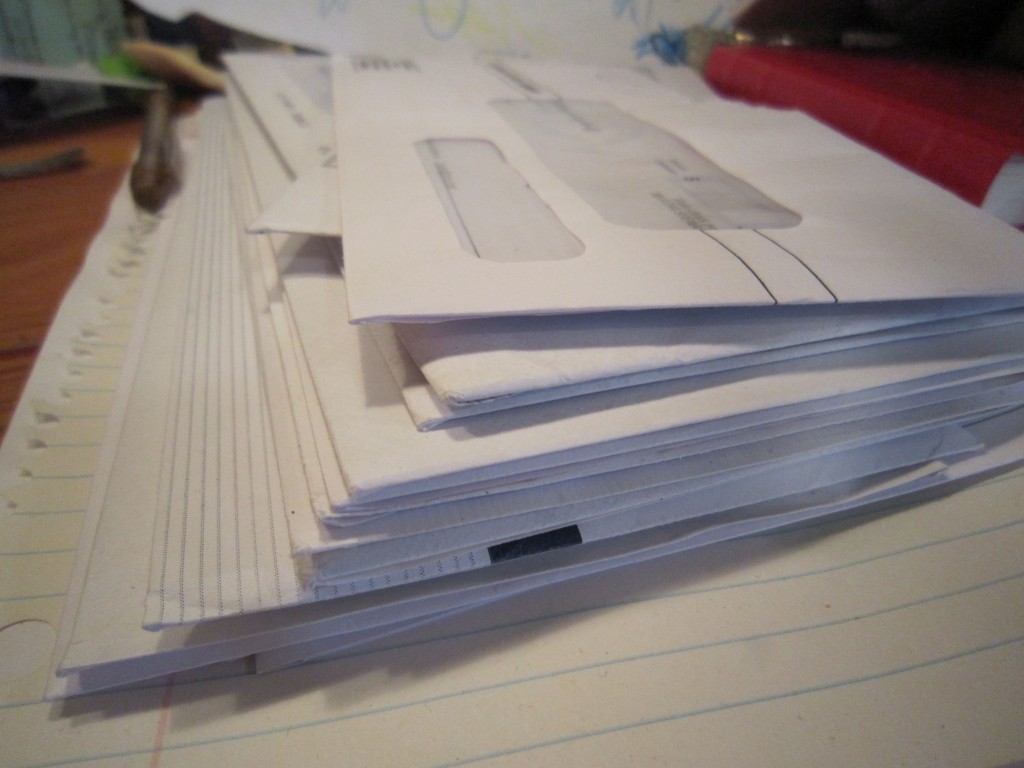Ever have someone really hold you accountable? You could squirm and make excuses and wriggle, but he or she would just steely eyeball you and insist you persevere? Get it right, instead of just good enough?
Tough love, some would call it. Some might just call it tough.
One such person comes to mind for me – my violin instructor. He would say, “Close only counts in horseshoes and hand grenades.” Somewhat gruesome motivation to share with a 7th grader, to be sure, but from it I intuited that my poorly practiced attempt at Beethoven wasn’t going to cut it. I would double down, focus and work harder, hoping to hear some less critical phrase at our next lesson.
Well, when it comes to household budgeting, I’m living the tough love chapter of All Your Worth at the moment. Elizabeth Warren and her daughter, Amelia Warren Tyagi, dish it out in Chapter 3, In Which Reining In “Must Haves” Spending Is Enforced. They describe this step as the key to financial security, so no fudging allowed.
While folk wisdom may have trained us to think a penny saved is a penny earned, the Warrens wisely point out that a dollar saved is a dollar earned, and a hundred times faster than that little ole penny. When you spend the time to spend the dollars to their best effect, the financial picture improves much faster than if you saved cents by comparison shopping for shampoo, or whatnot.
The Warrens say that if we can keep “must have” spending at or below 50 percent of after-tax income, we will gain control over finances. This control will provide flexibility because there will be more money for savings and wants. It will also begin to provide security, because we can build up long-term savings.
As I mentioned in my last post on Needs or Must Haves, our household spends about 63 percent in this category. After figuring it, I realized whittling that number down is going to be a huge project. Thank goodness I have this blog and the Warrens’ book to keep me accountable.
When we started the blog last month, I’d imagined I’d have my balance clearly defined and be living the savings by now. Hah. As I crawl along finding time here and there to read, consider, and act on the book’s advice, I can tell I’m in the doghouse and I’ve got to get busy!

I don’t have car loans, so I don’t need to decide whether to sell a vehicle, (both our cars were purchased used, and paid-in-full). At this point, I don’t have to examine whether I need to relocate, get a new job, or any number of other difficult questions the book’s authors ask. The lifestyle choices I face now are not as emotionally charged as they might have otherwise been. Yet principles and politics did still pop up in my decision-making process.
Since all the items in the Must Have list are important to quality of life, attempting to reduce them will not be the matter of a few minutes work. Mortgages, car loan payments, student loans, insurance of various types are all complicated financial and legal documents that will all need to be reexamined. But assessing them in detail, the book says, is time well spent because a refinanced mortgage, done correctly, can save thousands in one year.
As I look at our Must Haves, I know what we have to do. I must refinance the mortgage on my old house (aka The Barnacle) – my home before I was married almost 5 years ago. We must shop around for cheaper car and home insurance. We must find out if refinancing my student loans is possible.
I’ve made strides on the first task.
The situation: The Barnacle is currently a rental property because I can’t stomach selling the place in this bad market. The mortgage interest rate (8.5 percent) screams at me – Refinance me! I also have a bunch of equity in the home, which I bought in 1997 for an extremely low price.
So far I’ve checked with two financial institutions: my credit union and the current mortgage holder, Chase, which bought out Washington Mutual, which bought out some small bank in Jacksonville, FL, that originally held the loan. I had a great experience with the credit union. The representative was personable and patient with my questions. Chase, not so much.
Aside from offering me a great rate, my credit union is willing to offer what seems to me to be a great deal. They would refinance and roll in my student loans to the mortgage — another loan on which we pay 8.5 percent interest. Of course, they would pay off my student loans and I would then owe that money to bank.
The move would increase my overall home loan amount, which the authors forbid. The authors don’t want readers to take risks with the roof over their heads, which is why they say no to second mortgages, or home equity loans, or taking out more debt to pay other debt by “cashing in your equity” on a primary residence. I think because this will not increase my overall debt, but rather combine my debts at a lower rate it makes sense though. I will research this more before deciding.
Anyway, I got a great rate at the credit union on this business property, 3.95 percent, even though slightly higher than I would have been offered if this were my primary residence.
Chase’s rate was more like 5.25 with much higher closing costs and fees then the credit union, even though they currently hold my mortgage and would take on no extra risk to refinance. Here is a picture of Chase on its old log house:
At this point my prejudices are confirmed: I would really like to move my mortgage to a local credit union for political reasons as well as financial ones. Nice to know my politics are being supported on the ground by better service at the CU.
Because the authors require five quotes before signing on the dotted line with one bank over the other, I’ll check with a competing local credit union and Bank of America, which holds the mortgage on our primary residence (I know, hiss). I already know I want to move my mortgage to my credit union, but, I know, this is not an emotional decision, it is a business one. So far the credit union is offering the best deal hands down.

Next, car insurance: USAA covers our newer car (the one that took us to Texas) and coverage is comprehensive. I need to dig into the ins and outs of the plan, but for what we get, we pay about $200 month. We have another, older car that runs well but that doesn’t get the same level of coverage and costs $283 every six months to insure with Geico. I’ll shop both those plans.
Obviously, I’m going to have to get back to you on this stuff. Whoever said this was going to be easy? Well, I might have. Now I know it isn’t and that I’ve got to dig in and keep going.
Thanks to the blog for keeping me accountable, and thanks to the Warrens for the tough love to make me double down, focus and do a better job.
 So where have I been? Certainly not online. My family and I have traveled along the edges of the country in the past few months, yet I have not written about our adventures here. Why not?
So where have I been? Certainly not online. My family and I have traveled along the edges of the country in the past few months, yet I have not written about our adventures here. Why not?














